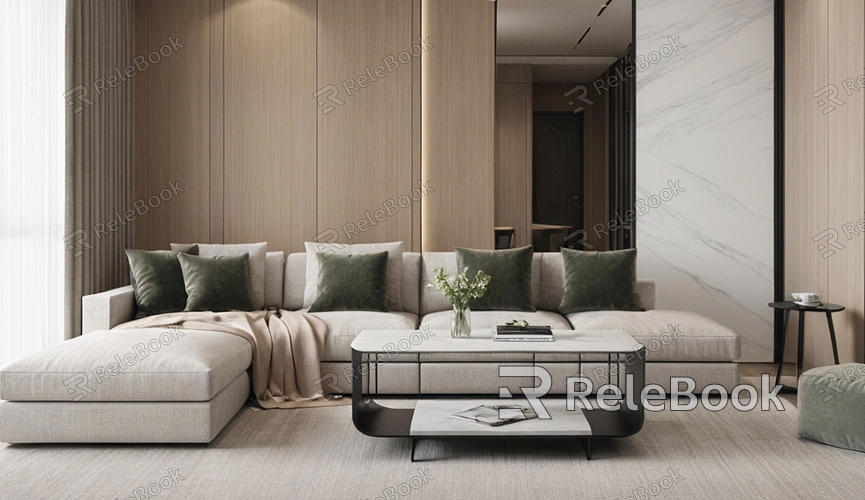How to Import Blender Models into Unity 3D?
In the realm of game development and virtual reality, Blender and Unity 3D are two crucial tools. Blender is a powerful open-source 3D modeling software, while Unity 3D is a widely used game engine. Importing models created in Blender into Unity 3D allows you to use custom 3D assets in your games or applications. This article will guide you through the process of importing Blender models into Unity 3D, covering preparation, export settings, and handling in Unity.

Preparing Your Blender Model
Before importing a model into Unity, ensure that the model in Blender is complete and accurate. Here are the key steps for preparation:
1. Clean Up Your Model
In Blender, make sure your model does not have unnecessary faces, vertices, or hidden objects. Use the "Clean Up" tool (in "Edit Mode," use the shortcut "X" to clean up) to remove unwanted parts. Keeping your model clean will help it perform better in Unity.
2. Apply Transformations
After making adjustments such as scaling, rotating, or moving your model in Blender, you need to apply these transformations. Select the model, press "Ctrl+A," and choose "Apply All Transforms." This ensures that the model maintains the correct position and scale in Unity.
3. UV Mapping
Ensure your model is UV unwrapped and has appropriate textures. UV mapping is the process of laying out the 3D model’s surface onto a 2D plane so that textures can be correctly applied. Use Blender’s UV editor to complete this step.

Exporting the Model to Unity 3D
Blender offers various export options, with FBX being the most commonly used format. Follow these steps to export your model:
1. Select Your Model
In Blender, switch to "Object Mode" and select the model you wish to export. If you have multiple models, make sure all the objects you need are selected.
2. Set Export Options
Choose "File" > "Export" > "FBX." In the export settings, make sure to select the "Selected Objects" option to export only the objects you’ve selected. Adjust other settings as needed, such as “Scale” to match Unity’s units, typically set to "Meters."
3. Save the File
Choose a location to save the FBX file, name it, and click "Export FBX." This will create an FBX file that you can import into Unity.
Importing the Model into Unity
Once you have exported the model, the next step is to import it into Unity:
1. Import the Facebook File
In Unity, open your project and drag the FBX file into the “Assets” folder. Unity will automatically recognize and import the file. You can find the imported model in the “Project” window.
2. Configure Model Settings
Select the imported model and adjust its settings in the “Inspector” panel. For instance, you may need to set the model’s scale factor to ensure it matches the size in Blender. Additionally, you can configure collision and other components for the model.
3. Apply Materials and Textures
If your model has textures, you need to apply them to the model’s materials. Create or edit materials and drag the textures into the material’s “Texture” section. Then, assign the material to your model to display the correct appearance in Unity.
4. Bone Animations (if applicable)
If your model has bone animations, ensure you set up animations in Blender before exporting. Unity will recognize animation data in the FBX file. You can view and adjust animation settings in the “Animation” panel.
Importing Blender models into Unity 3D is a crucial step in game development and virtual reality projects. By preparing your model correctly, setting up export options, and configuring the model in Unity, you can ensure that your 3D assets perform well in your projects. Following the steps in this article will help you seamlessly integrate custom models into Unity. For high-quality 3D models and textures, visit the Relebook website to enhance your creative resources.
FAQ
Why does my Blender model have scaling issues when imported into Unity?
This is often due to different unit settings between Blender and Unity. Apply transformations in Blender and make sure to choose the correct scale settings during export so the model appears correctly sized in Unity.
Why doesn’t my imported model have materials in Unity?
Ensure that UV mapping is correctly set up in Blender and that materials are included during export. After importing into Unity, you may need to manually apply materials and textures to the model.
Why does my model appear black in Unity?
This could be due to incorrect normal directions on the model. Check the normals in Blender and make sure they are facing outward. You can use Blender’s “Normals” tool in “Edit Mode” to fix these issues.
How can I resolve model distortion issues in Unity?
Distortion may occur if transformations are not properly applied in Blender. Apply all transformations (location, rotation, scale) before exporting. Additionally, check for any mesh issues like extra vertices or faces.

